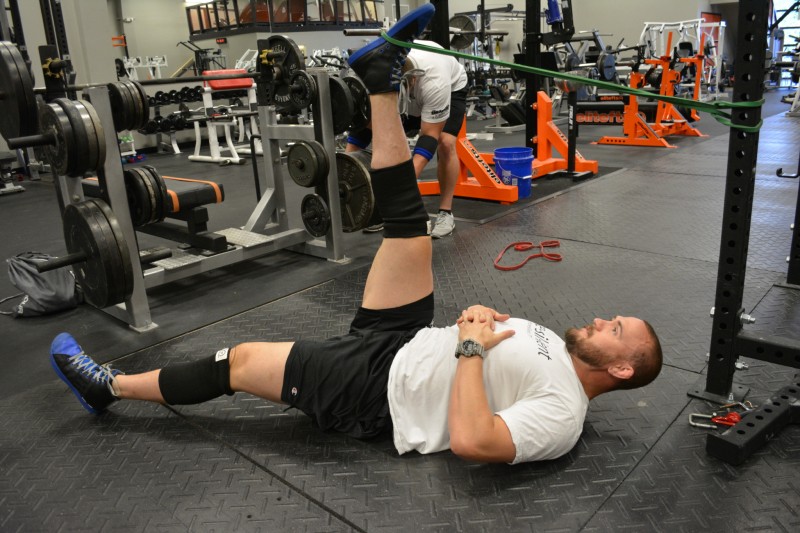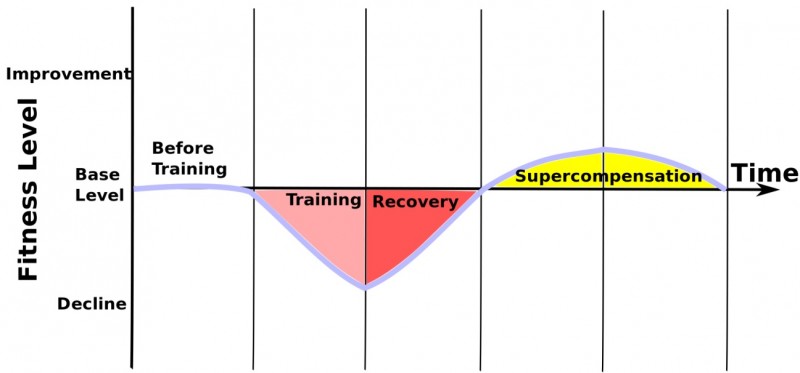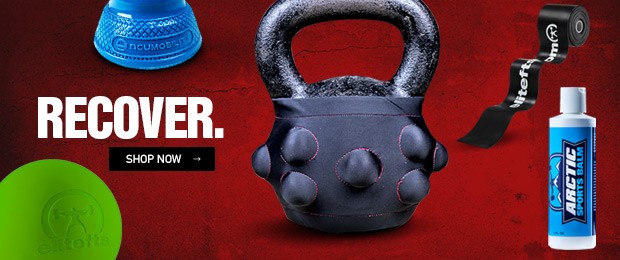
“Recovery is not for those who need it; it’s for those who want it.” — Anonymous.
Admittedly, this quote is a reference to recovery from addiction and isn't intended to reference recovery from training, but there is irony in the quote other than it being an addiction recovery quote from an anonymous source. The irony is that this statement actually does work well when applied to performance and training. Recovery is not for those who need to perform at their best; it’s for those who WANT to perform at their best.
The foundations of recovery are set in the general principle that all processes in the body are driven by a universal goal of maintaining homeostasis and resisting change. When the body gets too hot, it responds by sweating to resist the change in body temperature and return to normal. If you go out and drink too much booze on the weekend, your body responds to the increased alcohol concentration in the blood by metabolizing the alcohol and increasing its excretion of bodily fluids (sometimes from multiple locations). Furthermore, if the body is exposed to a certain stimulus or change in demand consistently enough, it builds a tolerance or adapts to make itself better suited to handle future stress. For example, if you live in Arizona long enough, your body will adapt its respiratory and cardiovascular system to better handle an environment with dryer air and warmer temperatures.
RECENT: Tools of the Trade — Popular Modalities for Soft Tissue Recovery and Therapy
In athletics and training, regardless of sport or goal, the body works from the same premise. If the body is subjected to enough stress and physical work, multiple responses occur, such as increased heart rate and output, increased respiratory rate, and mobilization of energy stores. These are all responses that your body naturally takes to handle the physical stress and strain being placed on it. If there is enough stress in training, the body’s response is to increase its ability to resist these stresses, which leads to an increase in performance. So, great, we’ve now defined why the body responds after training and gains size, strength, and overall performance, but where does recovery come into any of this? The answer is that we actually just explained it. Recovery is the response to training that allows you to increase overall performance.
The body is like a building. If you’re a beginner lifter or athlete, chances are your building is a little wooden shack with one window and your goal is to turn that dainty little shack into a brick shithouse. Your building has a lot going for it, in that you have access to some of the most capable labor forces available that are willing to work around the clock to get you where you need to go. The issue, however, is that they are just the workers. You are the architect and your decisions in utilizing training and recovery are what ultimately control the construction or implosion of your building.
Training — The Sledgehammer
Training, whether it be in the weight room, at practice, or during competition, is a stressful stimulus on the body. Training is a sledgehammer. It represents the hard work, sweat, and strain that you repetitively put into your building. Training, by definition, is work (force x distance), as you are applying force to an external environment in order to move an object or propel yourself across a particular distance. The act of accomplishing this work breaks the body down. It causes destruction of tissue and wear and fatigue in the body.
The sledgehammer is the first step in upgrading and enhancing your building. When used wisely, the sledgehammer provides the strain and damage to your building that is necessary to break it down so your workers can add to and improve on its structure. Eventually, as the buildout improves, your building will be more resistant to the sledgehammer and it will require more and more advanced sledgehammers in order to continue to break down your building. It is important to understand that the sledgehammer is a tool. It is one of multiple tools that you must utilize to enhance your building and it can only be used to break your building down.
Recovery — Raw Materials and Blueprints
Recovery is the body's ability to react to an activity or stress and return to normal or increased function. Recovery allows the body to return to overall homeostasis and also allows for adaptation. This includes restoration of physiological functions (blood pressure, cardiac cycle, resting cell environment), energy stores (blood glucose and muscle glycogen) and tissue repair from the micro-damage of training. It allows for increased tissue growth and resistance to strain and also decreased fatiguability of the body’s tissues. These altogether effectively improve performance and extend the threshold of loading required before joints and soft tissues fail.
Recovery is not just stretching, or steady state cardio, or the extra sessions geared to pump blood into the body and peripheral joints. Recovery also involves what you eat and drink, how much you sleep, and even your decisions to go out and party each weekend. Recovery even extends to the healthcare professionals you seek to keep your joints and soft tissues healthy. Simply put, recovery is the act of building and improving your building. The raw materials of your nutrition and hydration give your body the supplies needed to build new, more resilient tissue following training. Implementation of recovery strategies like mobility, cardio, and personal or professional therapy provide your body’s workers the correct blueprints to optimize the construction of your newer, stouter structure.
Why Recovery Is So Important
So what are you missing out on by not focusing on recovery? Why is recovery such a big deal? Recovery is important because it is the actual portion of strength training in which your body responds to your training stimulus (the sledgehammer) and improves its capability to handle the next training session. The biggest misconception about performance and strength training is that the time and hard work spent in the weight room, under the bar, or on the turf running drills is what creates improvement in performance. This is not true. Although training is vitally necessary to provide the stress, which triggers the body to adapt, the actual act of adaptation comes from recovery from that training stress. Remember again that the sledgehammer can only be used for one purpose. If you over-utilize that sledgehammer or utilize it without purpose, you will continue breaking down your building until there is nothing left because you did not leave or devote enough time to recovery. Balancing training and recovery in athletics and even in rehabilitation from injury is extremely important to long-term success.
For those who are visual learners, the effects of training and recovery can also be illustrated by observing a basic supercompensation curve. During the time spent in a training session, you can see that the body’s ability to perform decreases as the training stress breaks the body down. After the training session is completed, the body switches primarily towards recovering and, if allotted enough time and the correct resources to do so before the next training stimulus, there is supercompensation and an increase in performance.
Image courtesy of https://en.wikipedia.org/wiki/Supercompensation
This information is nothing new, and widely available and learned by anyone involved in the study of strength and performance. So why is there such a struggle in utilizing these basic recovery fundamentals? The reason is that no matter how many times you read something in a book or hear about something from an expert, you still have to turn around and actually apply it. I suspect this connection is lost is due to many factors. For one, recovery is not very appealing. I’m willing to bet that even though many people aren't exactly thrilled to do a max set of squats that will leave their legs feeling like painful tubes of Jell-O, they will be much less thrilled to eat clean or do a contrast shower for 20 minutes in order to recover and perform better.
MORE: Metal Cylinders — Two Devices Helping My Training
Recovery is typically taken for granted until injury or plateaus in performance force a come-to-Jesus moment. For many athletes, the limiting factor in their performance becomes their ability to resist injury and keep their body from breaking down. There is not a single elite or veteran athlete that hasn’t figured out that the number one priority in performance is recovery. And there is never a shortage of young athletes who think their body is the exception to the rule and that they don’t have to apply to the laws of the body.
Unfortunately, science and the importance of recovery is not a religion. Whether you believe in it or not, recovery is an ongoing process that you will ignore and suffer the consequences from, or recognize, apply, and reap the benefits of. No matter what you think, you cannot take your building from shack to skyscraper by only using a sledgehammer.
Building a Recovery Plan
So how do you ensure that you will have longevity in your sport and balance in your training? Create a long-term plan for recovery. Just as in any training program or business, the best way to ensure long-term success with your recovery is to develop a plan. In order to develop a successful plan, you must first understand the processes for which you need to plan. If you do not understand how and why the body breaks down or the consequences of this wear over time, you will never understand the importance of ensuring proper recovery.
Therefore, if you can understand and value these basic fundamentals of recovery, you will have completed the first step in building a well-rounded recovery plan. These fundamentals are the foundation from which we will build an individualized recovery plan. They identify the “why” of the plan and give direction and value to it. This may not seem like a big deal, but this is often the biggest factor that drives you to stick with a plan or drop off. Everyone is always excited and motivated at the start of any lifestyle change, but understanding the reason behind your plan allows you the discipline to push through in the long term when the work inevitably becomes less palatable.
In this article, the basics have been outlined as to WHY you need recovery. So what’s the next step in building a recovery plan? Stay tuned for the next installment of the Back to Recovery Basics series as we discuss the foundation of a good recovery plan.
Back to Recovery Basics: The Big Three
Dr. Tyrel Detweiler provides care for athletes across all sports with a majority of his experience coming from working with athletes in collegiate and strength sports. He holds a doctorate in Chiropractic and a Master’s of Science in Sports Rehabilitation. He is the owner of Mid-South Spine and Sports Performance in Cordova, TN. This facility has a unique relationship with NBS Fitness, giving him access to some of the best strength athletes in the Mid-South. He was a former member of Mizzou’s Sports Medicine Team and is currently in his second year as the chiropractic physician for the University of Memphis Athletics. Tyrel was a college football player at the University of Iowa and has competed in powerlifting and strongman since 2010. He is also the current Mississippi state representative for United States Strongman. He can be reached at drdetweiler@midsouthssp.net.












2 Comments